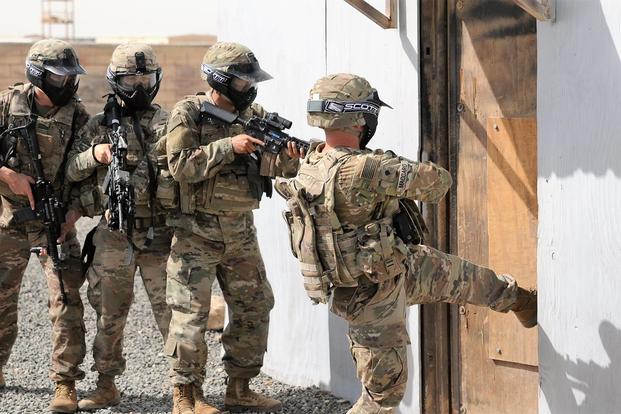Members of the House Armed Services Committee said today that U.S. Army urban warfare training is not realistic enough to prepare soldiers for the dense megacity battlefields they may face in the future.
The committee's emerging threats and capabilities subcommittee released its markup of the proposed fiscal 2019 National Defense Authorization Act today, which included a section on Army urban warfare training. In it, lawmakers called for a briefing from the Army secretary on plans to beef up urban warfare training and a study on the practicality of building another training center specifically for this purpose.
Recent trends show that the future of global violence will reside in urban areas, and that the next war will likely be fought in densely populated cities, the document states.
Lawmakers on the subcommittee agreed that the Army has not given urban warfare training a high enough priority and needs to look at putting more funding toward creating training centers that mirror the harsh realities of this type of combat.
"The committee is particularly concerned with the Army's lack of realistic training sites that reflect the scale and density of real-world urban operating environments," the document states.
For the past couple of years, Army senior leaders have stressed the importance of being prepared to fight in megacities.
By mid-century, there will be at least 50 large urban areas with populations of more than 10 million people, Army Chief of Staff Gen. Mark Milley said in February 2017. Today, there are only about a dozen of these huge megacities, he said.
To prepare for this new battlefield, Army leaders maintain that the service must move away from the current tank and armored vehicle platforms which have been designed to fight in woodland and desert environments with rolling terrain.
As part of its new modernization effort, the Army's Next Generation Combat Vehicle must be able to maneuver in urban terrain, Army officials said.
Lawmakers on the subcommittee believe that "the Army should more aggressively prepare for urban warfare and explore the construction of an urban warfare training center that focuses on basic and advanced skills to fight, survive, and win in urban operating environments," the markup states.
"This training should address the challenges associated with vertical, subterranean, and dense urban terrain, and the inclusion and integration of joint and interagency enablers," it continues.
Under the proposed markup, the subcommittee "directs the Secretary of the Army to provide a briefing to the House Committee on Armed Services not later than February 1, 2019," on the Army's plan for urban warfare training.
The briefing should include an overview of the plan and the projected costs of integrating an urban warfare training program, according to the document.
Lawmakers also want a feasibility study on the construction of an urban warfare training center, the markup states.
The subcommittee markup is part of a lengthy process to finalize the 2019 NDAA, which contains the military budget. Ultimately, the bill must complete a full committee markup in the House and then be reconciled with the Senate version of the bill before it can be signed by the president.
-- Matthew Cox can be reached at matthew.cox@military.com.













